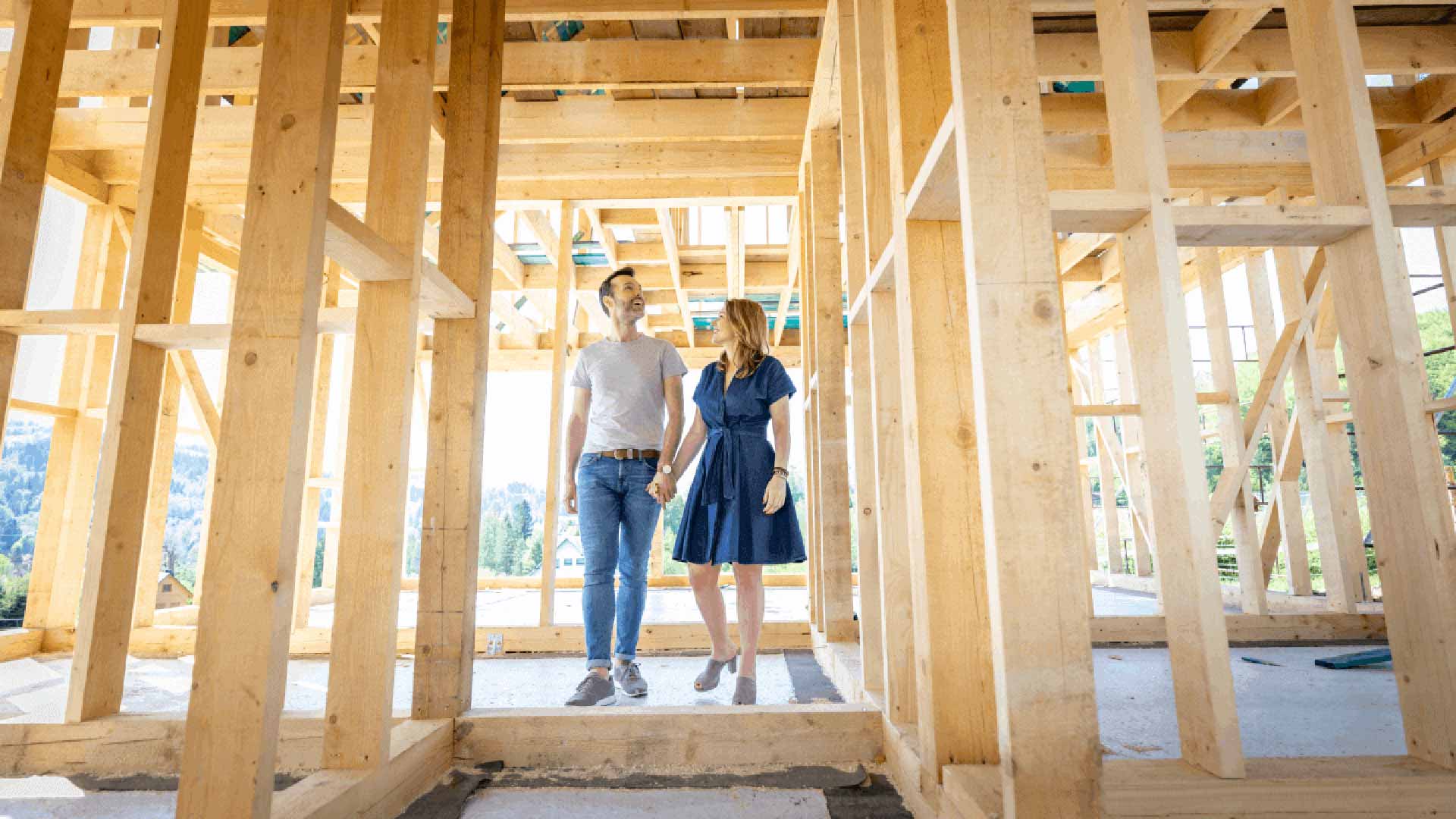Owning your own block of land is the great Australian dream, but finding the perfect spot comes with many considerations. While navigating these waters may seem intimidating, having the guidance of a professional will give you peace of mind. We’ve partnered with several real estate agents to give you the best advice when buying a block of land.
Advice from real estate experts
Marnie Beauchamp – Property Agent
My advice when looking to purchase a block of land is to look for something which has a good building opportunity. If it is a sloping site you need to factor in additional excavation costs and foundation works and it would be best to choose a home design that suits a sloping block to reduce the foundation and excavation cost (i.e. split level, garage underneath etc.).
Also, it is wise to carry out a Geotechnical investigation to determine the ground classification – if rock, the cost for a rock breaker to do the excavation is on an hourly rate and could result in huge amounts more before you even commence construction of your home. Alternatively, if the ground is too soft or there is a natural spring or groundwater you will also be looking at additional costs for drill foundations down through to stable ground.”
Brett Pilgrim – Ray White Adelaide Group
When looking at land, it is always good to get your builder to have a look, compare it to others for a square metre rate, start by assuming the block is flat and square, then subtract from there for things like slope, trees, irregular shapes etc. This will help you determine a fair market value.
Whether you are setting down roots or building a home away from home, here are the 13 key things to consider when buying a new block of land.
1. Zoning restrictions
Before you purchase the block, be sure to research zoning regulations for both your property and the surrounding area. Councils have strict rules regarding what a block of land can be used for (residential, commercial, industrial). If the block next door could potentially develop into a warehouse or 5 story apartment building it might not be the best option for your quiet retreat away from home. You will also want to make sure there are no plans to build a highway or other infrastructure through your land or the nearby area.
2. Water source
Do you know how your property connects to water sources? What about restrictions on water use, or collecting your own rainwater? Water is an essential utility, so it is important to know your obligations and options.
For example, in NSW the BASIX initiative encourages new developments to take water saving measures with a target of reducing main water usage by 40%. Many elect to use water tanks, however, the proximity of your new home to creeks, rivers and dams can play a part in how attractive a block of land is as a potential home.
3. Know the climate
Yearly rainfall, temperature highs and lows, seasonal changes and even trends over the last 20 years are all factors to consider when looking to purchase land. The climate affects many aspects of your life, including:
- How you insulate your home
- The types of plants and vegetables you can grow
- Potential for drought, frost and other extreme weather conditions
- The type of home that is appropriate for your block of land
- How much energy you might expect to use
- Health conditions like asthma that are affected by temperature
While you might not be able to have it all, knowing the climate of the local area can help you make a more informed decision.
4. Safety from bushfires and flooding
Australia is a country of extremes. Depending on where your block of land is located, it could potentially be at risk to both fire and flooding. These very real dangers can be avoided by consulting resources like Geoscience Australia, which can help you determine flood zones as well as bushfires. State and local government Councils will also have more information. Crosscheck occurrences over several years to get a clearer picture of how safe your new home will be from extreme acts of nature.
5. Soil quality and composition
Soil quality and composition impacts both how you build your new home and the potential for growing your own plants on your property.
When it comes to building, soil composition can impact:
- Cost of building foundations
- Amount of earthworks required
- Stability and land retention
Contact a local and qualified engineer to have your soil tested before finalising your build plans.
6. Orientation
Orientation is one of the joys of designing your own home. By taking advantage of the ‘north-facing aspect’, you can make use of available sunlight throughout the year while minimising the impact of direct sunlight and the ‘greenhouse effect’ to avoid overheating in the summer.
However, when buying land you will want to consider any existing easements, roads, driveways and the proximity of other structures both existing and potential (neighbouring land). For example, given a choice of two great views, make use of the one that isn’t going to look into a neighbour’s fence in a few years.
7. Trees and bushland
The position of existing trees can play a significant role in your decision to purchase a block of land. While our natural fauna is beautiful and can add shade to the backyard, it can also pose a risk in extreme weather.
Consider the impacts of falling branches or even whole trees on your home, particularly in storm affected areas. Removing trees is no easy task either. Fines for illegal removal of native trees can be excessive, so plan accordingly. Local Councils can advise on tree removal and restriction.
8. Utility access
What companies can connect your gas, electrical and water? How much do they cost, and is there any competition?
Rates can differ depending on where your new home is located, so take the time to source information about the companies that can provide your utilities. Contact them by phone for quotes, and ask locals in the area about their satisfaction with local utilities.
9. Incline of your block
There are a few things to consider if your block is located on a steep incline:
- Additional costs of building the home
- Effects of weather on soil
- Water runoff from the road if your block is below
- The design and orientation of the home
Steep properties have their benefits; like better views from more locations in the home, but this will all need to be considered carefully before finalising your purchase.
10. Proximity to neighbours
For private people, the proximity to neighbours is an important factor to consider. If the block of land that you are looking at is in between two homes, you need to seriously consider if you will be comfortable with having neighbours in such a close proximity.
If the block of land you are interested in is currently in an undeveloped area, it is worth enquiring about current and future building proposals and developments. Otherwise, you may buy a private home only to be surrounded by neighbours in the coming years.
11. Access to town amenities
Whether you need to run out for a carton of milk, visit the doctor or send your kids to school, it is always great to pick a block of land that is close to a nearby town. So, when considering a block of land, ask yourself, how far am I willing to travel for shopping and health care?
It is also worth noting that relatively easy access to local town amenities will future-proof your home. This is because, should you decide to lease or sell your home, renters and home buyers will pay more for the access to schools, shops and hospitals.
12. Size and shape
When considering a block of land, you more likely than not have a home design in mind. Therefore, the land needs to be able to accommodate the home you want to build and any plans you might have.
In terms of size, your land needs to be big enough to accommodate your plans for not only the dwelling, but also the front yard and backyard. Additionally, if you want to subdivide, the block needs to be wide enough.
13. Future changes
Future changes can have a large impact on your home. That is why, when considering a block of land, you need to take a step back and think about the big picture. For example, will possible road changes, nearby developments or rezoning affect your outlook?
It is also important to objectively view the street on which the piece of land is located. If the street is relatively new, do things like power lines and road signs need to be installed? Will these instalments impact your home in any way?
Start designing today
Searching for the perfect block of land can be a challenging process. With so many different factors to consider, it is easy to give up on the dream of building your own home on a piece of vacant land.
Rather than give up, take the process step-by-step. Starting to look at parcels of land in your ideal location is the most logical first step. From there, consider things like zoning restrictions and the makeup of the land. It is best to know early what design restrictions you might face.
Next, think of the big picture. Will the land accommodate a home that meets your needs today and in the future? If the answer is yes, you are ready to sign on the dotted line. To help you on your journey, find inspiration in our design brochure or sit down with our design team today.





